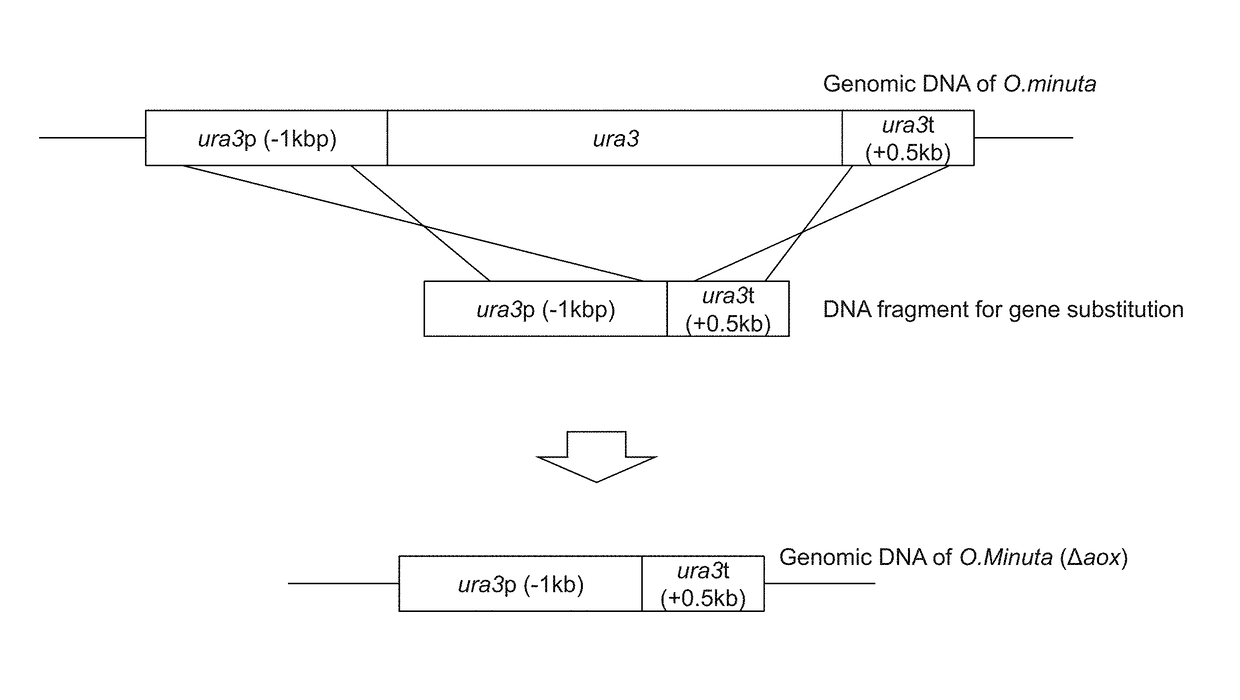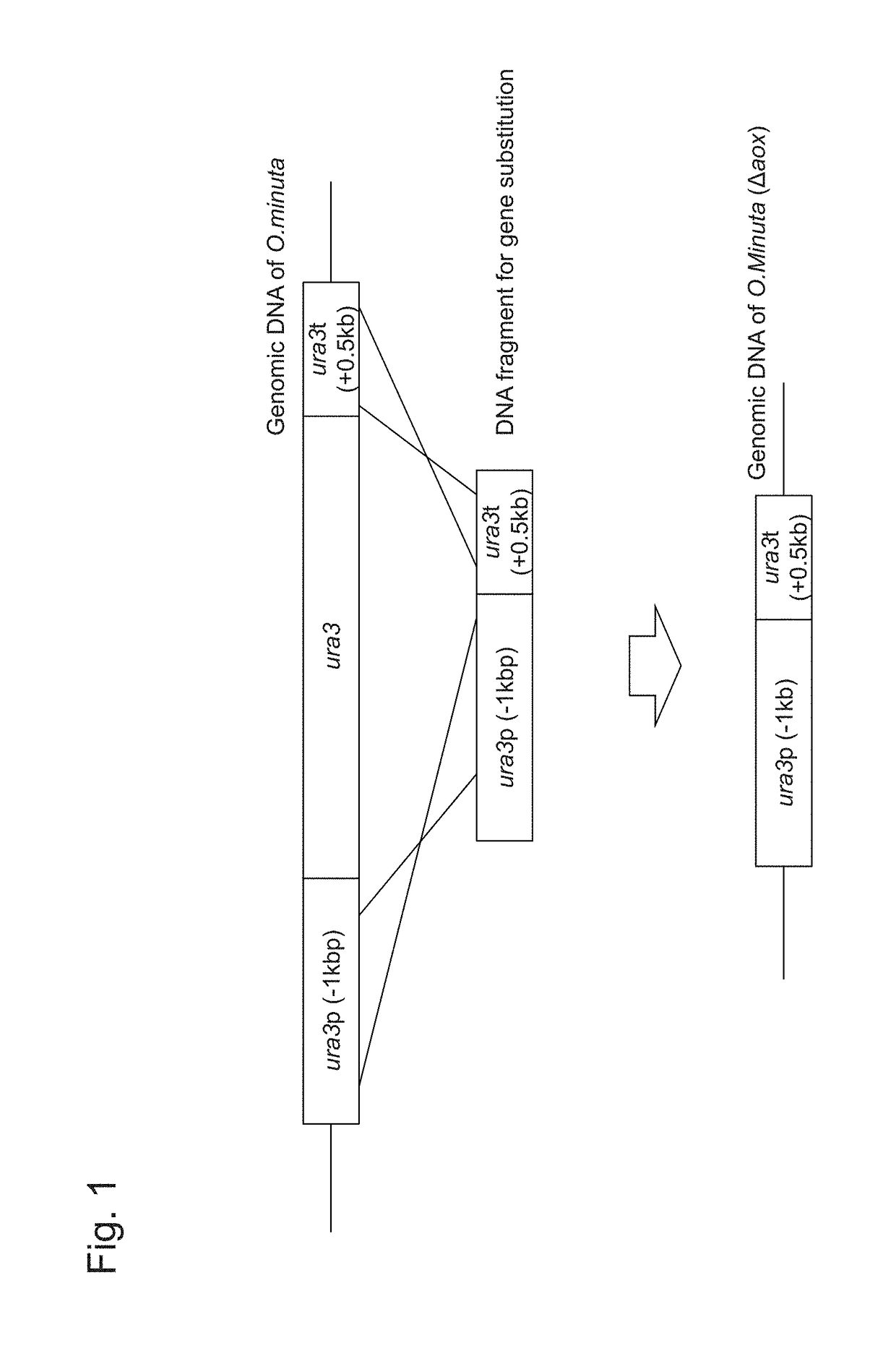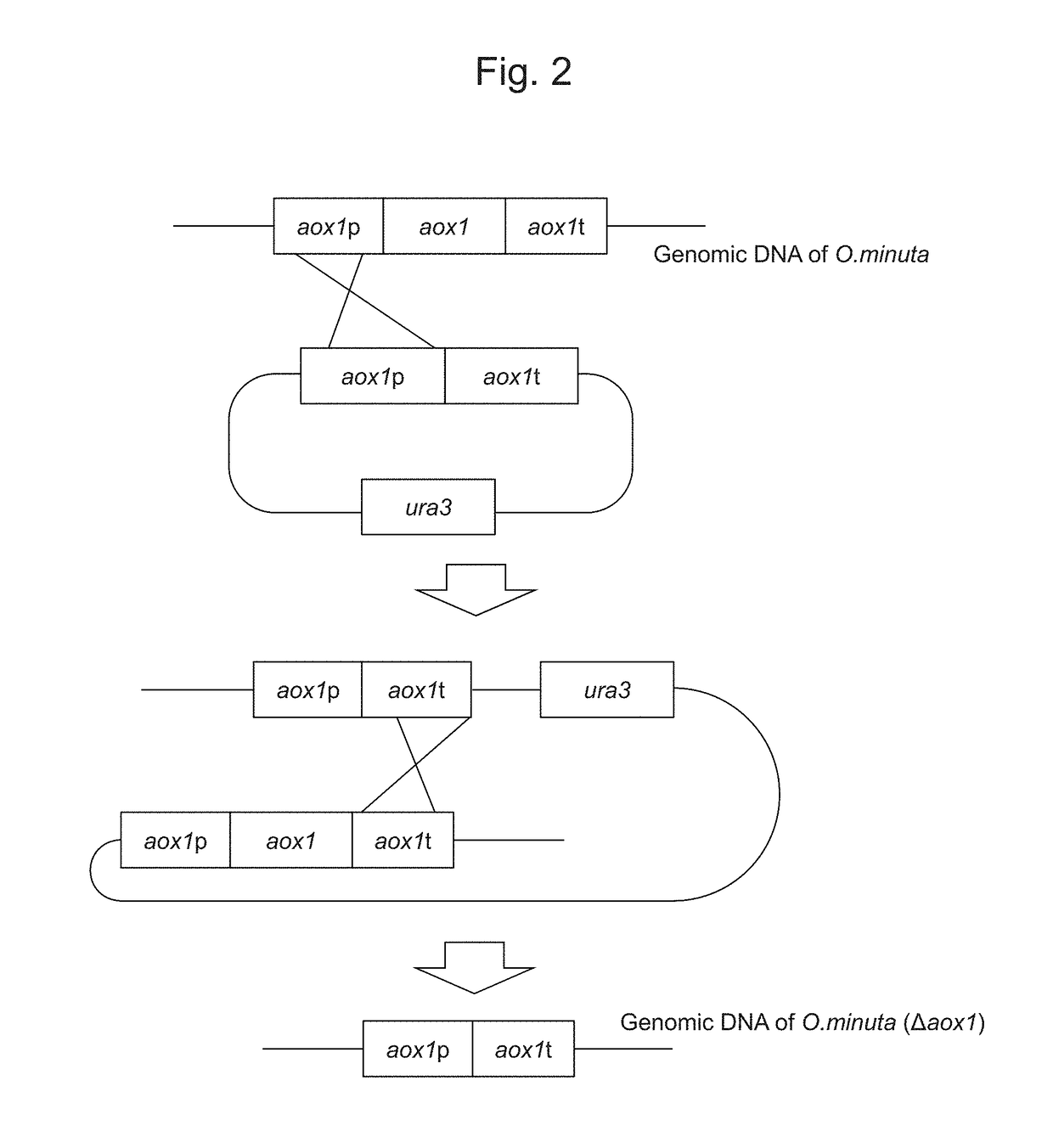Method for improved high-level secretory production of protein
a high-level secretory and yeast technology, applied in the field of high-level secretory production of yeast proteins, can solve the problems of inability to achieve synergistic or additive effects, disadvantageous accumulation of abnormal higher-order structures of proteins, and no reports concerning high-level secretory expression of target proteins, etc., to achieve high-quality and safe effects
- Summary
- Abstract
- Description
- Claims
- Application Information
AI Technical Summary
Benefits of technology
Problems solved by technology
Method used
Image
Examples
example 1
[Example 1] Construction of Vector for Foreign Gene Expression
[0113](1) Construction of Vector for Foreign Gene Introduction Carrying a Zeocin-Resistant Gene as a Selection Marker and Comprising the Aox1 Gene Promoter of NBRC 10746 (O. minuta, Biological Resource Center, NITE) and the Terminator Cassette
[0114]NBRC 10746 AOX1 (GenBank Accession Number AB242209) comprises an amino acid sequence of 663 amino acids encoded by a 1,992-bp base sequence (SEQ ID NO: 27, SEQ ID NO: 28). PCR was carried out using the genomic DNA of NBRC 10746 prepared with the use of the Y-DER Yeast DNA Extraction Reagent (78870, PIERCE) as a template, the Hd AOXp Fw primer (5′-GCAAGCTTTCTTTCGCAAACAGCTCTTTG-3′: SEQ ID NO: 1), the AOXp ry primer (5′-GAACCCGGGAACAGAATCTAGATTTTTTCGTAAGTCGTAAG-3′: SEQ ID NO: 2), and the PrimeSTAR Max DNA Polymerase (RO45A, Takara Bio Inc.) at 98° C. for 10 seconds, 55° C. for 5 seconds, and 72° C. for 15 seconds, and this cycle was repeated 30 times. Thus, an aox1 promoter region...
example 2
[Example 2] Preparation of Strain in which the Ura3 Gene has been Disrupted
(1) Preparation of DNA Fragment for Ura3 Gene Disruption
[0116]FIG. 1 shows forms of gene disruption using a DNA fragment comprising the ura3 ORF promoter and the terminator. NBRC 10746 URA3 (GenBank Accession Number AB242207) comprises an amino acid sequence of 265 amino acids encoded by a 798-bp base sequence (SEQ ID NO: 29, SEQ ID NO: 30). PCR was carried out using the genomic DNA of NBRC 10746 prepared with the use of the Y-DER Yeast DNA Extraction Reagent (78870, PIERCE) as a template, the dURA Fw primer (5′-GGTACCAGTACTGGAAA-3′: SEQ ID NO: 5), the dURA ry primer (5′-CAGATAAACAGGCGACT TTTCGGGTCACGTGACT-3′: SEQ ID NO: 6), and the PrimeSTAR Max DNA Polymerase (RO45A, Takara Bio Inc.) at 98° C. for 10 seconds, 55° C. for 5 seconds, and 72° C. for 5 seconds, and this cycle was repeated 30 times. Thus, a ura3 terminator region-containing DNA fragment comprising the ura3 terminator region of about 0.5 kbp and a...
example 3
[Example 3] Preparation of a Strain in which the Aox1 Gene has been Disrupted
(1) Preparation of Vector for Aox1 Gene Disruption
[0118]FIG. 2 shows forms of gene disruption using a DNA fragment comprising the aox1 ORF promoter and the terminator region. pOMEA-Z1 constructed in Example 1 was subjected to double digestion with HindIII and KpnI to obtain a DNA fragment comprising the aox1 gene promoter and the terminator cassette. The DNA fragment comprising the aox1 gene promoter and the terminator cassette was introduced into the DNA fragment obtained via double digestion of the onaP09007 plasmid described in WO 2009 / 057813 (i.e., a constant expression vector for a gene encoding OmKar2) with HindIII and KpnI to obtain the pOMEU1 plasmid.
(2) Preparation of a Strain in which the Aox1 Gene has been Disrupted
[0119]The pOMEU1 plasmid was introduced into the strain in which the ura3 gene has been disrupted (Δura3 strain) described in Example 2 via electroporation under the conditions describ...
PUM
| Property | Measurement | Unit |
|---|---|---|
| Fraction | aaaaa | aaaaa |
| Fraction | aaaaa | aaaaa |
| Acidity | aaaaa | aaaaa |
Abstract
Description
Claims
Application Information
 Login to View More
Login to View More - R&D
- Intellectual Property
- Life Sciences
- Materials
- Tech Scout
- Unparalleled Data Quality
- Higher Quality Content
- 60% Fewer Hallucinations
Browse by: Latest US Patents, China's latest patents, Technical Efficacy Thesaurus, Application Domain, Technology Topic, Popular Technical Reports.
© 2025 PatSnap. All rights reserved.Legal|Privacy policy|Modern Slavery Act Transparency Statement|Sitemap|About US| Contact US: help@patsnap.com



